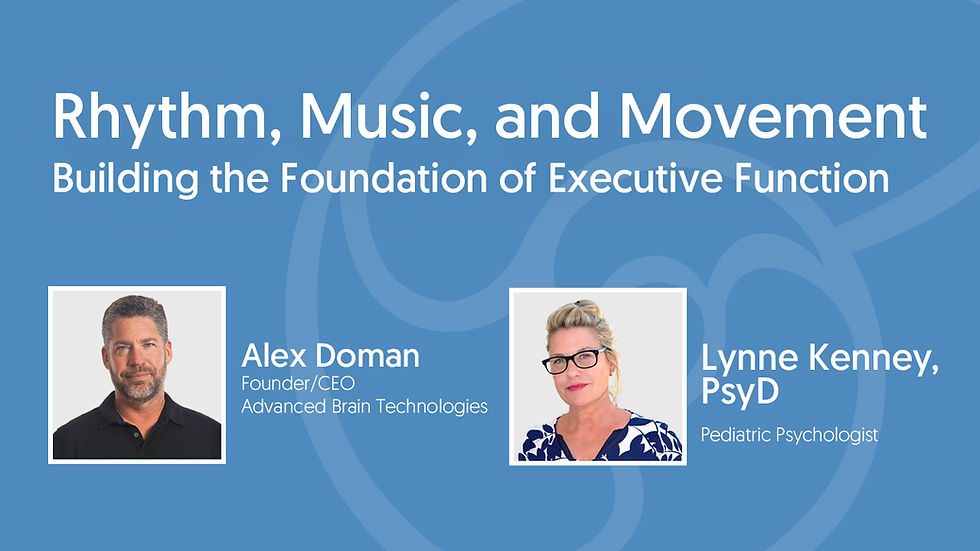Power-Up Classroom Cognition with Music, Rhythm, and Motor Movement
- drlynnekenney

- Oct 28, 2023
- 3 min read
Updated: Apr 26, 2024

Incorporating music, rhythm, and motor movement to strengthen executive function in children is an effective way to “Power-Up” children’s learning. Executive functions are cognitive processes that help individuals manage and regulate their thoughts, actions, and emotions. Executive Function skills are central to a child's ability to plan, organize, focus, problem-solve, and manage their impulses. Well-developed executive function skills facilitate self-regulation which impacts thoughts, feelings, and behaviors associated with decision-making, risk-taking, quality of relationships, persistence, job performance, and life-long earning potential. One way to stimulate executive function in the classroom is to add “movement snacks” 1-2-minute rhythmic coordinative movements that are done before an academic task, during transitions, and in times when attention is waning, or students are off-task. Here are a few of the benefits of rhythmic movement in the classroom: Attention and Focus: Rhythmic movement can enhance a child's ability to sustain attention and focus on tasks. Activities that involve rhythm and motor movement encourage sustained engagement, which helps improve the attentional aspects of executive function. Cognitive Flexibility: Rhythmic movement can involve changes in tempo and rhythm. Engaging in activities that require a child to adapt to these changes promotes cognitive flexibility, an essential executive function that enables children to shift their focus, think creatively, and adapt to new situations. Emotional Regulation: By engaging in collaborative movement activities, children can practice regulating their emotions. When your students are “moving to the beat” together, their focus is on matching their movements in time with the beat and with their peers. These moments of coordinative movement help children manage stress, frustration, and impulsivity. Engagement and Motivation: Brief intentional moments of coordinative rhythmic movement enhance motivation and engagement in the classroom. Musically guided movement is inherently engaging, and children are often naturally drawn to it. The use of music and rhythm in activities can capture a child's attention and motivation, making it easier for them to participate actively in tasks aimed at developing executive functions. Inhibitory Control: Rhythm-based activities, such as drumming or dancing, often require children to follow specific rules and maintain control over their movements. These activities can help children develop inhibitory control, which is crucial for managing impulses and making thoughtful decisions. Memory and Recall: Music and rhythm can help children remember instructions, sequences, and information. Melodic patterns, lyrics, and rhythmic beats create mnemonic devices that can assist in the retrieval of information and the completion of tasks, which are critical aspects of executive function. Planning and Organization: Rhythmic motor movement activities require planning and organization. Children need to coordinate their actions, follow a structured sequence of steps, and make decisions about their movements, promoting the development of executive function skills. Problem Solving: Engaging in rhythmic motor movement activities often involves problem-solving. Children may need to adjust their technique, adapt to changes in a piece of music, or work together with others, all of which enhance their problem-solving skills. Social Interaction: Collaborative music and movement activities can help children develop social and interpersonal skills. Working with others in a group setting fosters cooperation, communication, and teamwork, which are all related to executive functions. Incorporating brief moments of music, rhythm, and motor movement into a child's daily routines or educational experiences allows them to practice executive function skills including self-regulation, attention, memory, cognitive flexibility, planning, organization, and problem-solving. Participating in coordinative rhythmic movement with the entire class or in partner activities also supports social skills. These activities not only provide a fun and enjoyable way to develop cognitive and emotional regulation but also lay the foundation for a lifetime of well-rounded development.






Comments